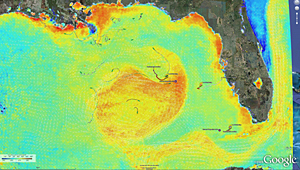
ADVERTISEMENT
- Rozovsky wins prestigious NSF Early Career Award
- UD students meet alumni, experience 'closing bell' at NYSE
- Newark Police seek assistance in identifying suspects in robbery
- Rivlin says bipartisan budget action, stronger budget rules key to reversing debt
- Stink bugs shouldn't pose problem until late summer
- Gao to honor Placido Domingo in Washington performance
- Adopt-A-Highway project keeps Lewes road clean
- WVUD's Radiothon fundraiser runs April 1-10
- W.D. Snodgrass Symposium to honor Pulitzer winner
- New guide helps cancer patients manage symptoms
- UD in the News, March 25, 2011
- For the Record, March 25, 2011
- Public opinion expert discusses world views of U.S. in Global Agenda series
- Congressional delegation, dean laud Center for Community Research and Service program
- Center for Political Communication sets symposium on politics, entertainment
- Students work to raise funds, awareness of domestic violence
- Equestrian team wins regional championship in Western riding
- Markell, Harker stress importance of agriculture to Delaware's economy
- Carol A. Ammon MBA Case Competition winners announced
- Prof presents blood-clotting studies at Gordon Research Conference
- Sexual Assault Awareness Month events, programs announced
- Stay connected with Sea Grant, CEOE e-newsletter
- A message to UD regarding the tragedy in Japan
- More News >>
- March 31-May 14: REP stages Neil Simon's 'The Good Doctor'
- April 2: Newark plans annual 'wine and dine'
- April 5: Expert perspective on U.S. health care
- April 5: Comedian Ace Guillen to visit Scrounge
- April 6, May 4: School of Nursing sponsors research lecture series
- April 6-May 4: Confucius Institute presents Chinese Film Series on Wednesdays
- April 6: IPCC's Pachauri to discuss sustainable development in DENIN Dialogue Series
- April 7: 'WVUDstock' radiothon concert announced
- April 8: English Language Institute presents 'Arts in Translation'
- April 9: Green and Healthy Living Expo planned at The Bob
- April 9: Center for Political Communication to host Onion editor
- April 10: Alumni Easter Egg-stravaganza planned
- April 11: CDS session to focus on visual assistive technologies
- April 12: T.J. Stiles to speak at UDLA annual dinner
- April 15, 16: Annual UD push lawnmower tune-up scheduled
- April 15, 16: Master Players series presents iMusic 4, China Magpie
- April 15, 16: Delaware Symphony, UD chorus to perform Mahler work
- April 18: Former NFL Coach Bill Cowher featured in UD Speaks
- April 21-24: Sesame Street Live brings Elmo and friends to The Bob
- April 30: Save the date for Ag Day 2011 at UD
- April 30: Symposium to consider 'Frontiers at the Chemistry-Biology Interface'
- April 30-May 1: Relay for Life set at Delaware Field House
- May 4: Delaware Membrane Protein Symposium announced
- May 5: Northwestern University's Leon Keer to deliver Kerr lecture
- May 7: Women's volleyball team to host second annual Spring Fling
- Through May 3: SPPA announces speakers for 10th annual lecture series
- Through May 4: Global Agenda sees U.S. through others' eyes; World Bank president to speak
- Through May 4: 'Research on Race, Ethnicity, Culture' topic of series
- Through May 9: Black American Studies announces lecture series
- Through May 11: 'Challenges in Jewish Culture' lecture series announced
- Through May 11: Area Studies research featured in speaker series
- Through June 5: 'Andy Warhol: Behind the Camera' on view in Old College Gallery
- Through July 15: 'Bodyscapes' on view at Mechanical Hall Gallery
- More What's Happening >>
- UD calendar >>
- Middle States evaluation team on campus April 5
- Phipps named HR Liaison of the Quarter
- Senior wins iPad for participating in assessment study
- April 19: Procurement Services schedules information sessions
- UD Bookstore announces spring break hours
- HealthyU Wellness Program encourages employees to 'Step into Spring'
- April 8-29: Faculty roundtable series considers student engagement
- GRE is changing; learn more at April 15 info session
- April 30: UD Evening with Blue Rocks set for employees
- Morris Library to be open 24/7 during final exams
- More Campus FYI >>
10:43 a.m., May 26, 2010----The oil spill in the Gulf of Mexico has been the focus of news all over the world for more than a month, and a group of public and private organizations -- including the University of Delaware (UD) and the Delaware Biotechnology Institute (DBI) -- have come together to assist in the clean up.
These organizations have joined efforts to form the DeepWater Horizon Response and they are tasked with employing the best techniques to clean up the spill while trying to save the wildlife affected.
Meanwhile, as the spill travels further every day, seemingly without any slowing of the leak, a UD scientist is helping the team understand where the oil may travel next.
UD's contribution to the DeepWater Horizon Response is the processing of real-time data of sea surface temperatures, as well as the deployment of an autonomous underwater vehicle called a Slocum Electric Glider (Glider). This work is possible through funding by the National Oceanic and Atmospheric Administration (NOAA), NASA, and through the Delaware Sea Grant program at UD.
Sea surface temperature is important because it allows scientists to track ocean currents. Based on the surface temperature of the water, researchers can determine how fast the water is moving, which direction its moving in, and as a result, where the oil will be traveling.
“The temperature of the water is a signal for what currents are approaching the spill location,” says Matt Oliver, assistant professor in the College of Earth, Ocean, and Environment. “This helps us determine where we need to focus clean up efforts.”
The gliders are remotely operated robots that swim a saw-tooth pattern and scan the ocean interior for traces of oil. They will provide live data via Google Earth, showing what is happening under the water and how the environment is being affected by the oil spill.
“UD's autonomous underwater vehicle will be deployed this week,” says Oliver. “We'll be able to send real-time data to researchers concerning densities, and the presence or absence of oil.”
The data Oliver and his team collects is being analyzed through a cluster of computers housed at DBI. These computers use the institute's powerful cyber infrastructure to calculate data based on input from UD's team of researchers. These data streams are visualized in real-time at the Global Visualization Lab on the Hugh R. Sharp Campus in Lewes, Del.
"This effort to facilitate real-time monitoring of events in the Gulf is an example of how the DBI infrastructure can be effectively directed to support faculty research, interact with other institutions, and help reduce the environmental impact of the leak," says Kelvin Lee, DBI director.
UD is one of several university partners involved with the Integrated Ocean Observing System (IOOS), which has coordinated the creation of the DeepWater Horizon Response. To learn more about the DeepWater Horizon Response, visit the website.
Article by Laura Crozier



